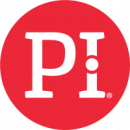“You’re taller than I thought you’d be.”
A phrase rarely heard within the offices of corporate America is now a common refrain for remote workers meeting for the first time. Office social rituals — through the pandemic and rise of the remote workplace — have slowly changed. For a hybrid workforce, faces mostly familiar as half a body on a virtual screen now produce surprise and joy when the journey to three dimensions is completed. Instead of the usual cubicle banter, coworkers today juggle the physical transition between geometric spaces while remembering the names and home cities of people frequently scattered across the country.
But within the new work zeitgeist, challenges come with benefits. Rather than fight the new normal, navigating the mainstream current can drive business forward. Hybrid offices come in all formats and policies, but successful ones manage a balance of autonomy for the workers and the flexibility of allowing a degree of social interaction so important for team morale.
“After nailing down our remote culture, we still wanted to make it possible for our employees to come together in person,” said Catherine McGurrin, The Predictive Index’s people operations specialist. The option of small talk, according to Harvard Business Review, produces more positives than negatives for a company.
Operating a hybrid work model not only improves how a team interacts, but also how it’s formed. By virtue of its format, remote culture opens up the hiring process to an applicant pool not restricted by commute times or geographic barriers. “There’s a lot of great and diverse talent that does not enjoy commuting into the city five days a week,” said Rachel Drake of Gradient AI’s recruiting and HR team. Aligning recruiting efforts with new expectations of where work can be done means establishing new channels to labor markets outside of traditional hubs.
For a workforce motivated by a mix of social opportunity and convenience, hybrid work is now often a baseline offer instead of an added bonus. As companies everywhere strike a compromise with employees for in-office flexibility, Built In Boston sat down with two companies ahead of the curve — using staggered schedules and a robust remote experience to power their culture and retention.

The Predictive Index is a talent optimization platform that helps companies find the right hires and create successful teams. With data support, the company’s software aims to help leaders organize their teams to maximize potential, while elevating employee performance and engagement. To match their product ethos, PI also implemented a flexible work model for employees so they can work at their best. “We trust our employees to do what works best for them,” said People Operations Specialist Catherine McGurrin.
Tell us a little bit about your company’s hybrid remote work model. What does it look like in practice?
The pandemic taught us a lot of things as a business, one of the biggest being that our employees can do great work whether or not they are in the office. In early 2021, we decided to shift our business to remote-first, and since then, we implemented a model that consists of three work options for our employees to choose from.
The Predictive Index’s Three Work Models
- Field: 100% remote and a one-time, unrestricted $1,000 stipend to be used as employees see fit to make their home office work for them.
- Flow: In the office one to two days per week with access to a hotel desk, and a one-time unrestricted $500 stipend.
- Studio: Three or more days in the office per week with an assigned desk and access to all office amenities.
We’re clear with employees that these options are equitable, but not identical; for Studio employees, you get free lunch on Tuesdays, but the trade-off is commute time and paying for gas. They value the flexibility to choose the best work option so that they can focus on bringing their best selves to work every day.
What’s the greatest benefit your company has seen from transitioning to a hybrid remote model?
We’ve been able to expand our talent search across the United States and tap into a broader talent pool. Since making the change to remote-first, we can hire remote employees all across the country, which has only benefited our organization.
Just this past spring, we opened a talent search for a new vice president of engineering. This position would normally take us a few months to fill, and would require the help of an expensive third-party executive recruiter that specializes in tech to find the right candidate in the Greater Boston area. With that one criteria change — location — we were able to broaden our talent pool, keep that search in house and eliminate a third-party recruiter altogether. Our recruiting team was able to directly source a top-level candidate based out of Michigan and close the search in 39 days, our organization’s personal best for an executive search. This only further validated our business’s decision to go remote-first, as it allowed us to find the perfect candidate who, had we not been willing to look outside of Massachusetts, we would not have otherwise been able to hire.
What’s one challenge you’ve encountered while implementing a hybrid remote model, and how has your company overcome it?
Part of what made PI such an amazing place to work was the experience of working in our HQ office. The energy of our office was collaborative, inspiring and motivating — it was electric. With the shift from that to remote-first, our organization had to think about how to create a work environment that retained the elements of the in-person experience, but virtually. We leaned into the technology available, utilizing Slack, Zoom and collaboration tool Miro, to name a few.
After nailing down our remote culture, we still wanted to make it possible for our employees to come together in person. We implemented a travel reimbursement policy, which allows for a minimum of one week at the office per quarter paid for by the company, and more frequent visits for upper-level management, to make our office more accessible for out-of-state employees. PI also invested in quarterly company events, including our annual kickoff, summer office Olympics and our holiday party, all of which are major draws for our employees to convene at our headquarters. By striking this balance, we’ve been able to reinvent our energizing, collaborative and electrifying company culture for this new way of work.
Gradient AI is a SaaS company that offers artificial intelligence and machine learning solutions to the insurance industry. The company’s software model allows AI to handle and learn about policies and claims at a scale that is beyond human underwriters. While the tech model aims to make life easier for those in the industry, the company also has a work model that seeks to give employees the best work environment. “We want to put our employees’ comfort and safety first,” said Rachel Drake, a member of Gradient AI’s recruiting and HR team.
Tell us a little bit about your company’s hybrid remote work model. What does it look like in practice?
We strive to have an inclusive working environment, so coming into the office is optional right now. For employees who do come in, it’s usually Tuesday, Wednesday or Thursday, and we try and pick dates other team members are in so we can utilize in-office collaboration. The free lunch doesn’t hurt either.
What’s the greatest benefit your company has seen from transitioning to a hybrid remote model?
Being able to recruit and hire employees not just local to Greater Boston. There’s a lot of great and diverse talent that does not enjoy commuting into the city five days a week. This has allowed us to expand our pool of candidates and hire people we wouldn’t have been able to in the past.
There’s a lot of great and diverse talent that does not enjoy commuting into the city five days a week.”
What’s one challenge you’ve encountered while implementing a hybrid remote model, and how has your company overcome it?
We’ve worked hard to make sure all employees, including those fully remote, feel engaged and understand our office culture. When the pandemic first started, we implemented Friday afternoon happy hours to get the entire company together via Zoom, but after almost two years we saw a dip in engagement. We’ve had tremendous growth, so a lot of employees didn’t know each other and didn’t feel the need to join.
After running a poll, we decided to keep the happy hour but switch up the format. They are now bi-weekly on Thursdays where our CEO and executives share company updates and we play team break-out games afterwards. This allows for smaller group settings where you can get to know a remote employee who’s not on your team or someone you normally wouldn’t work with.









